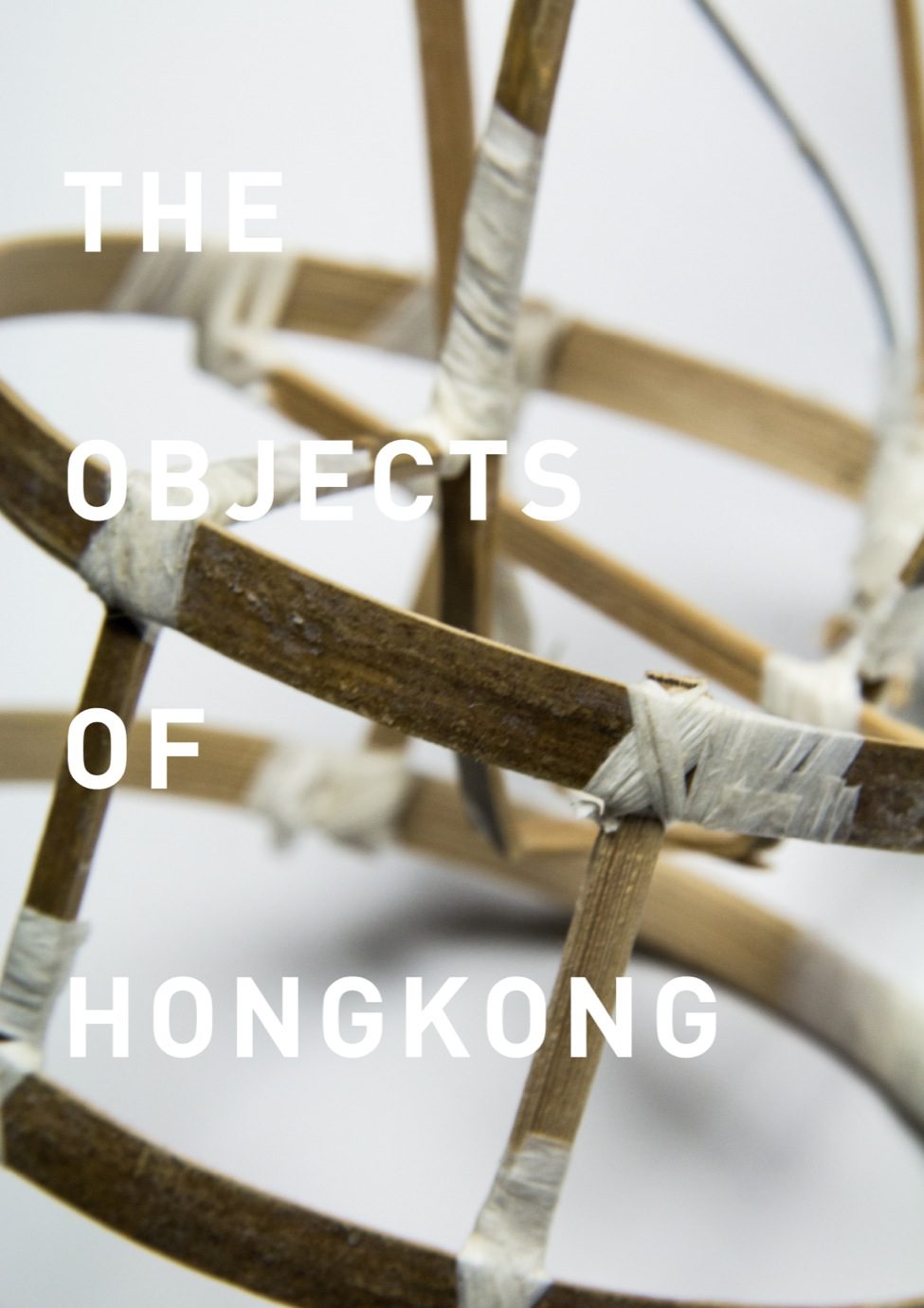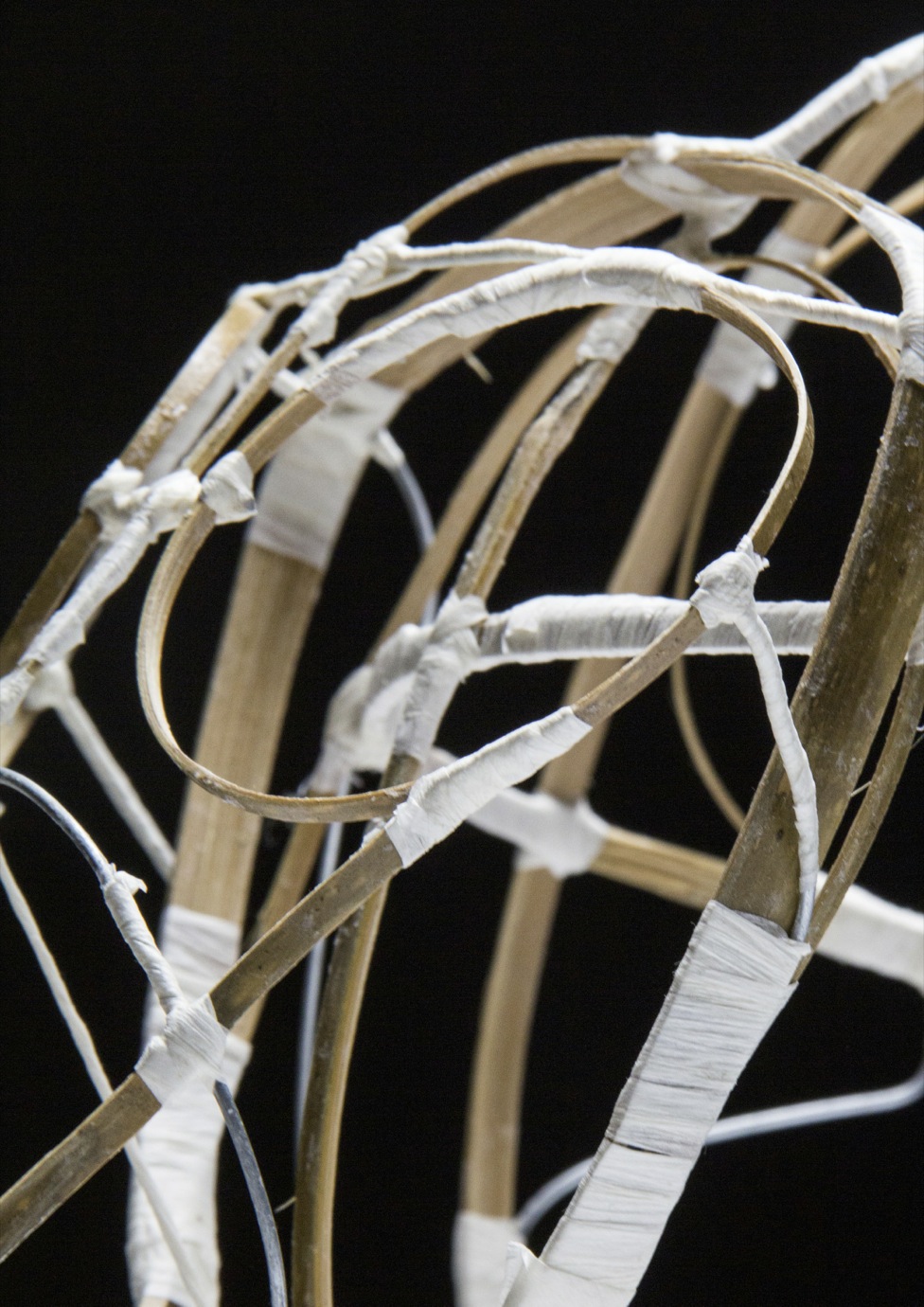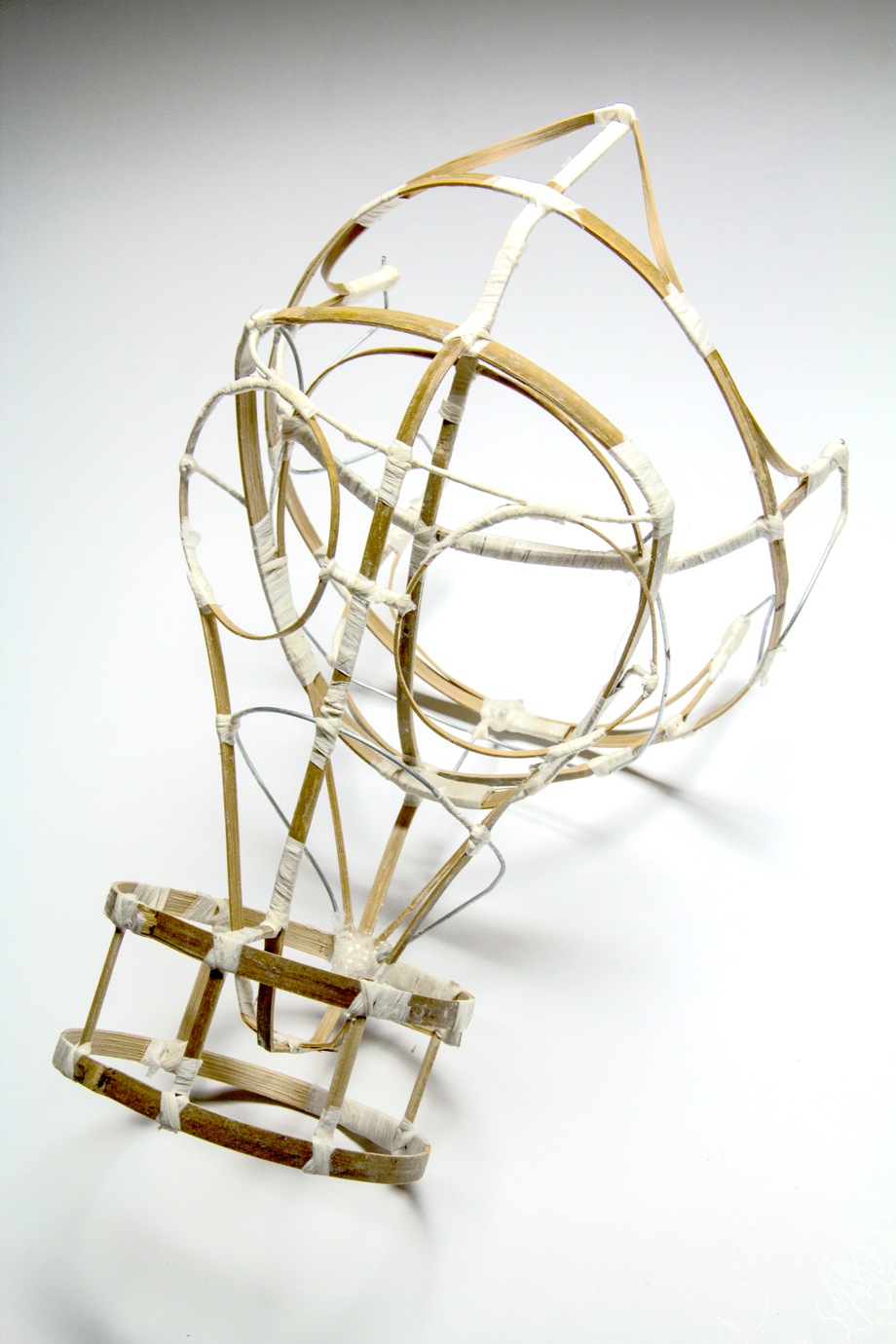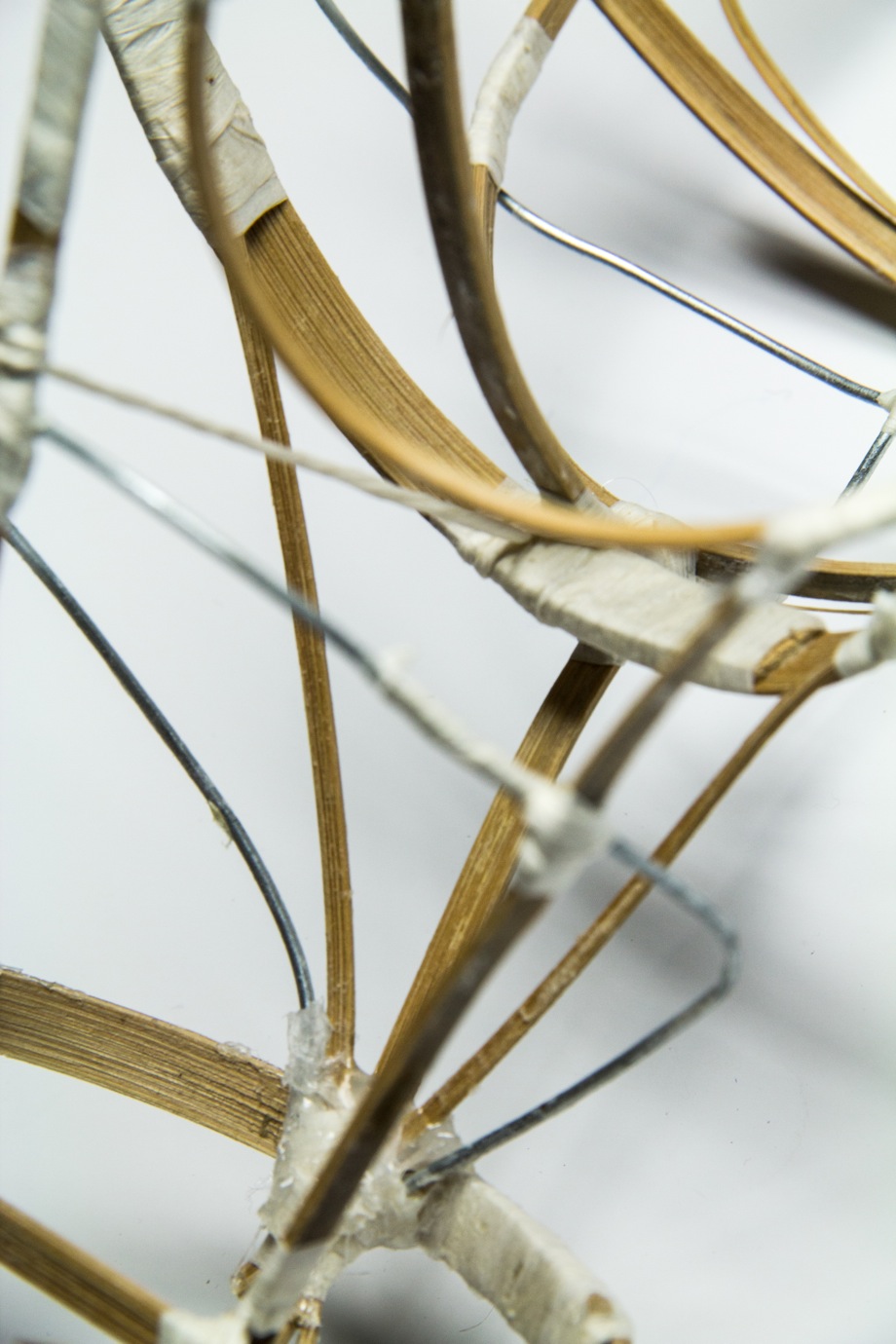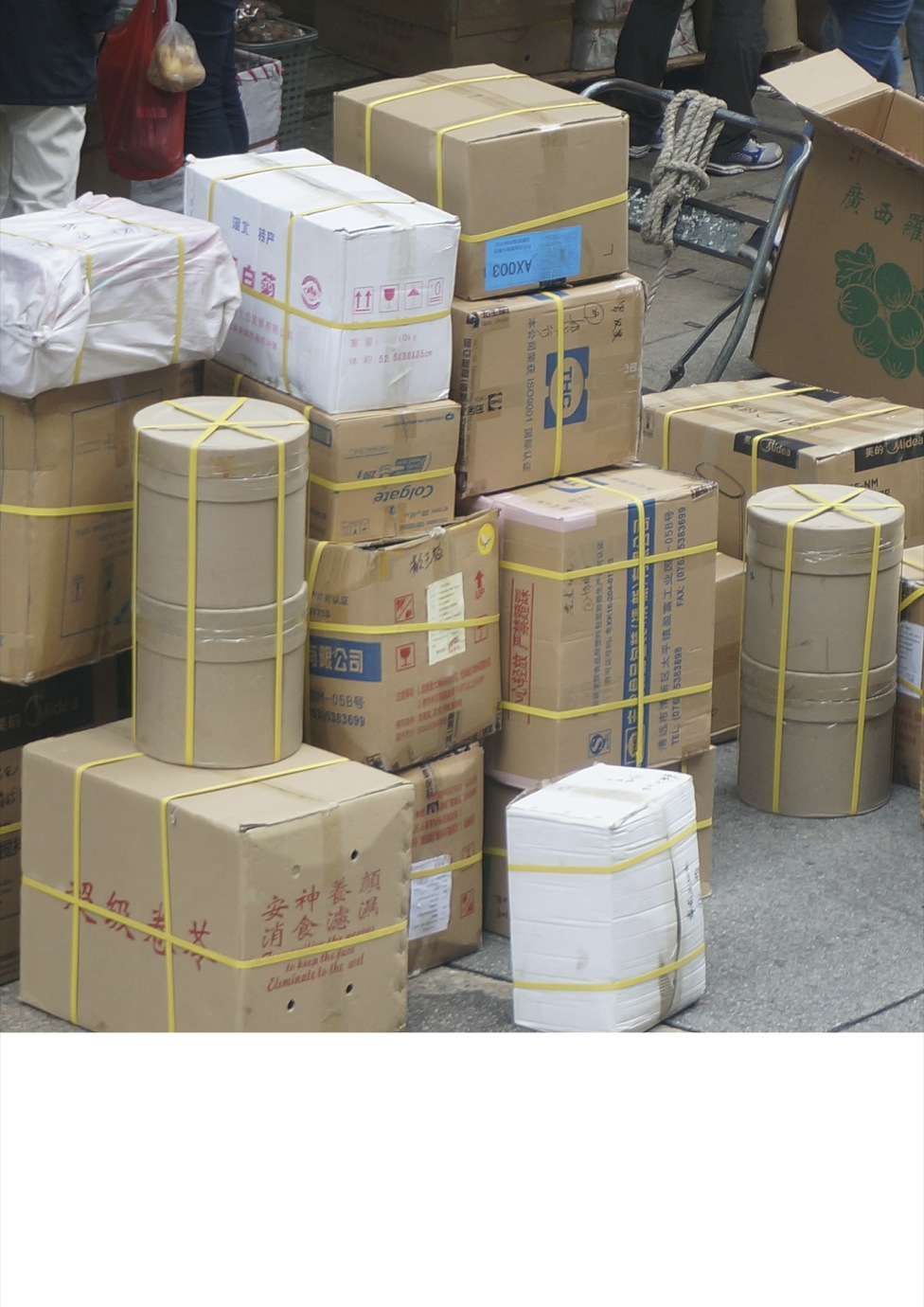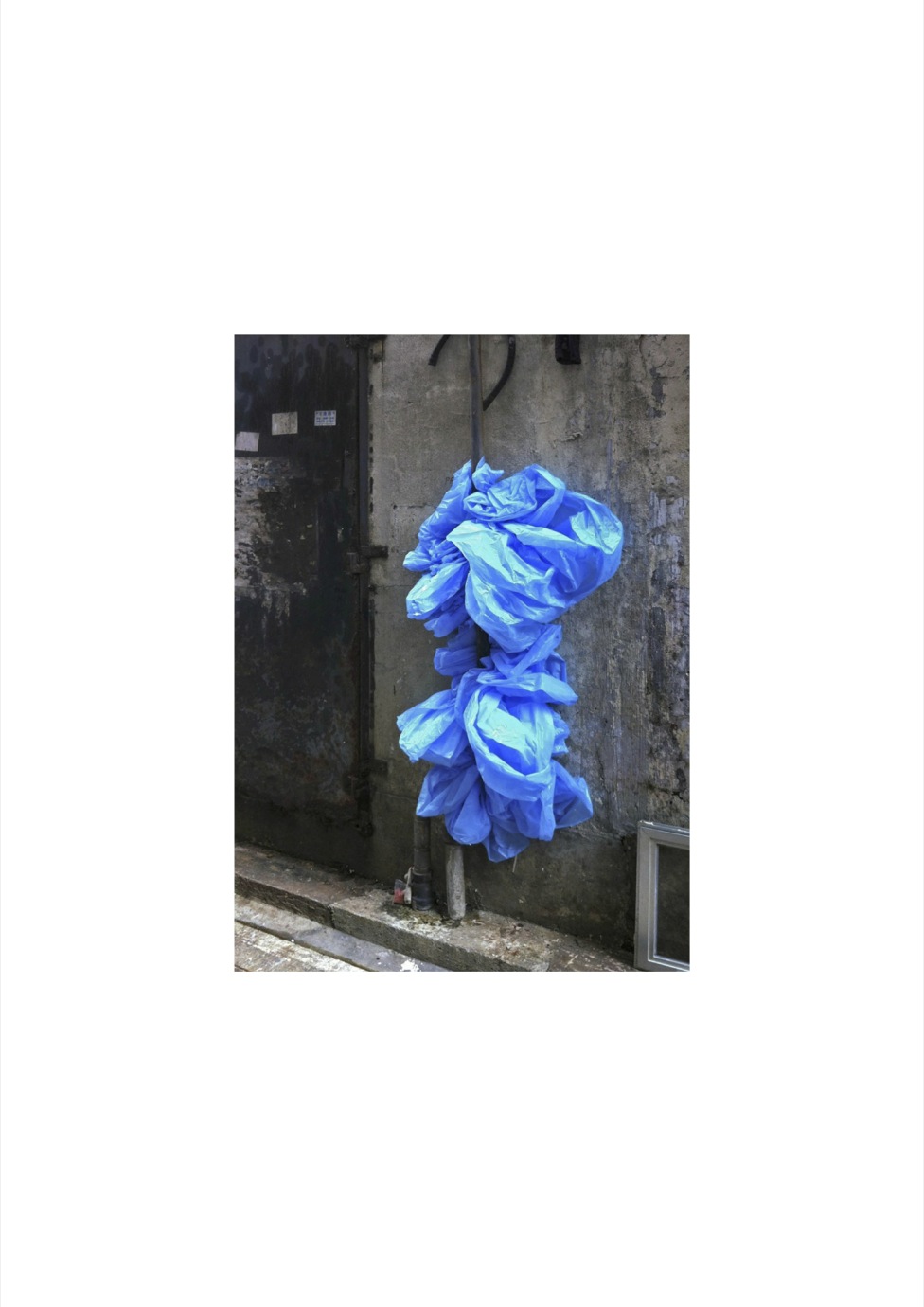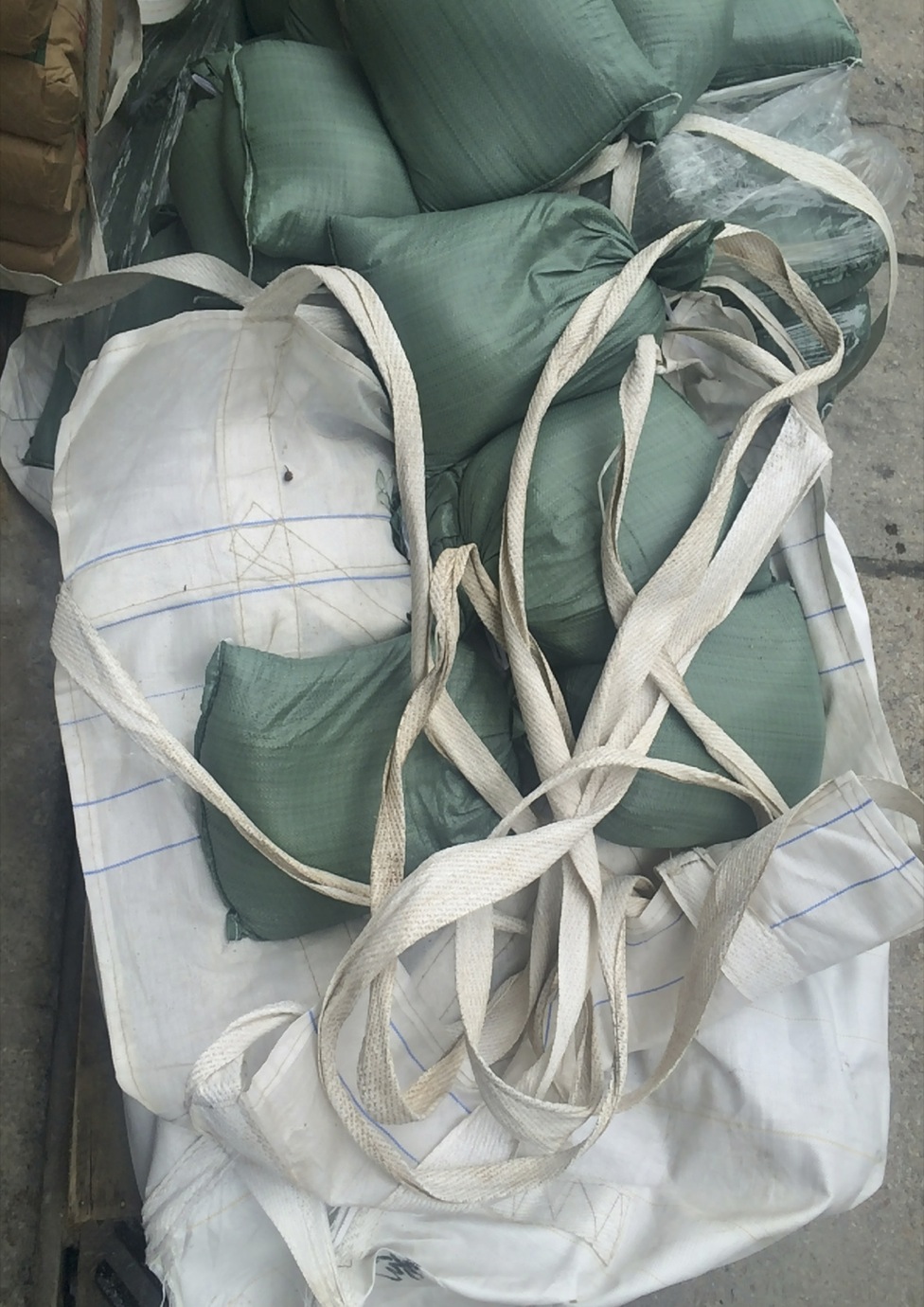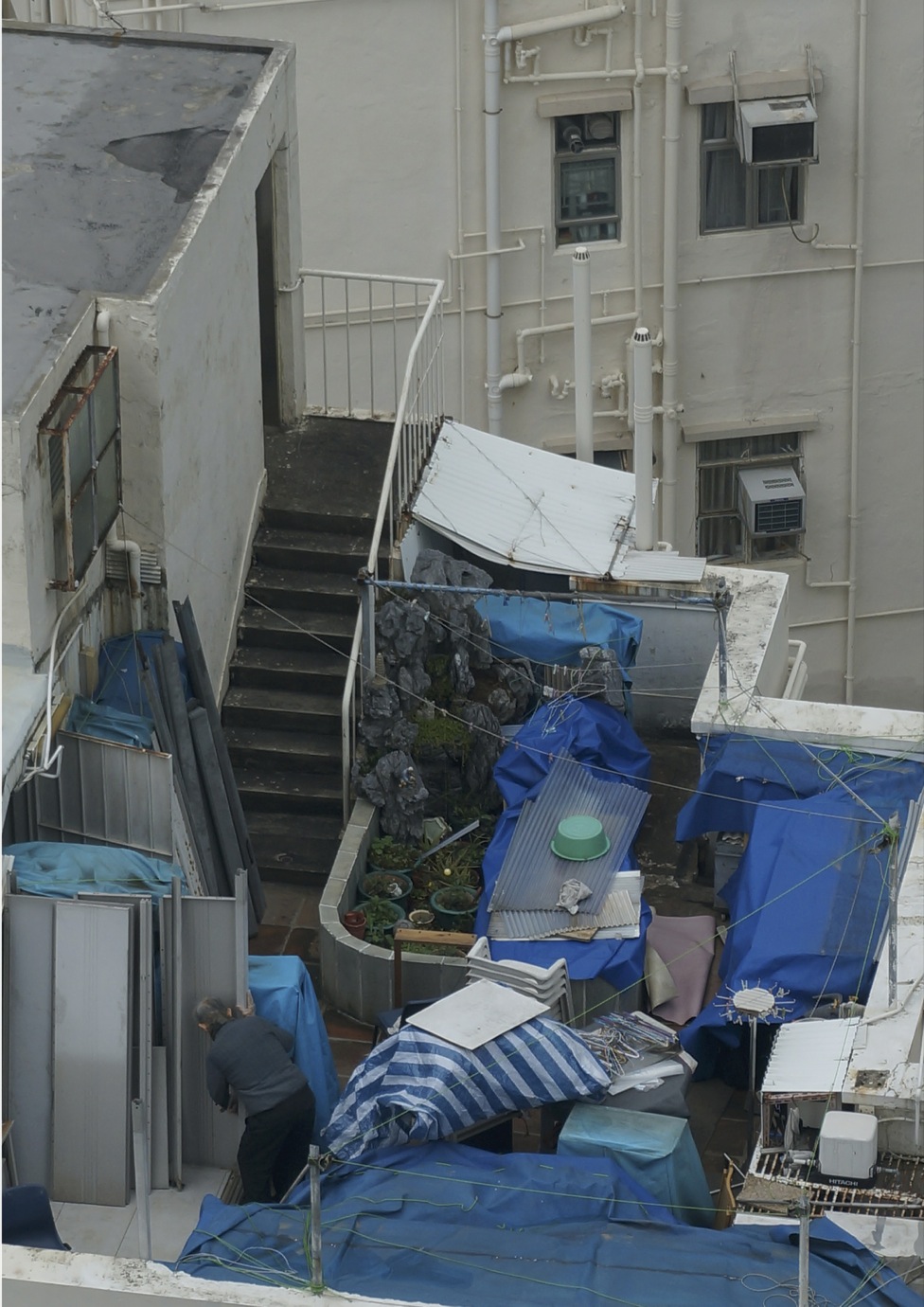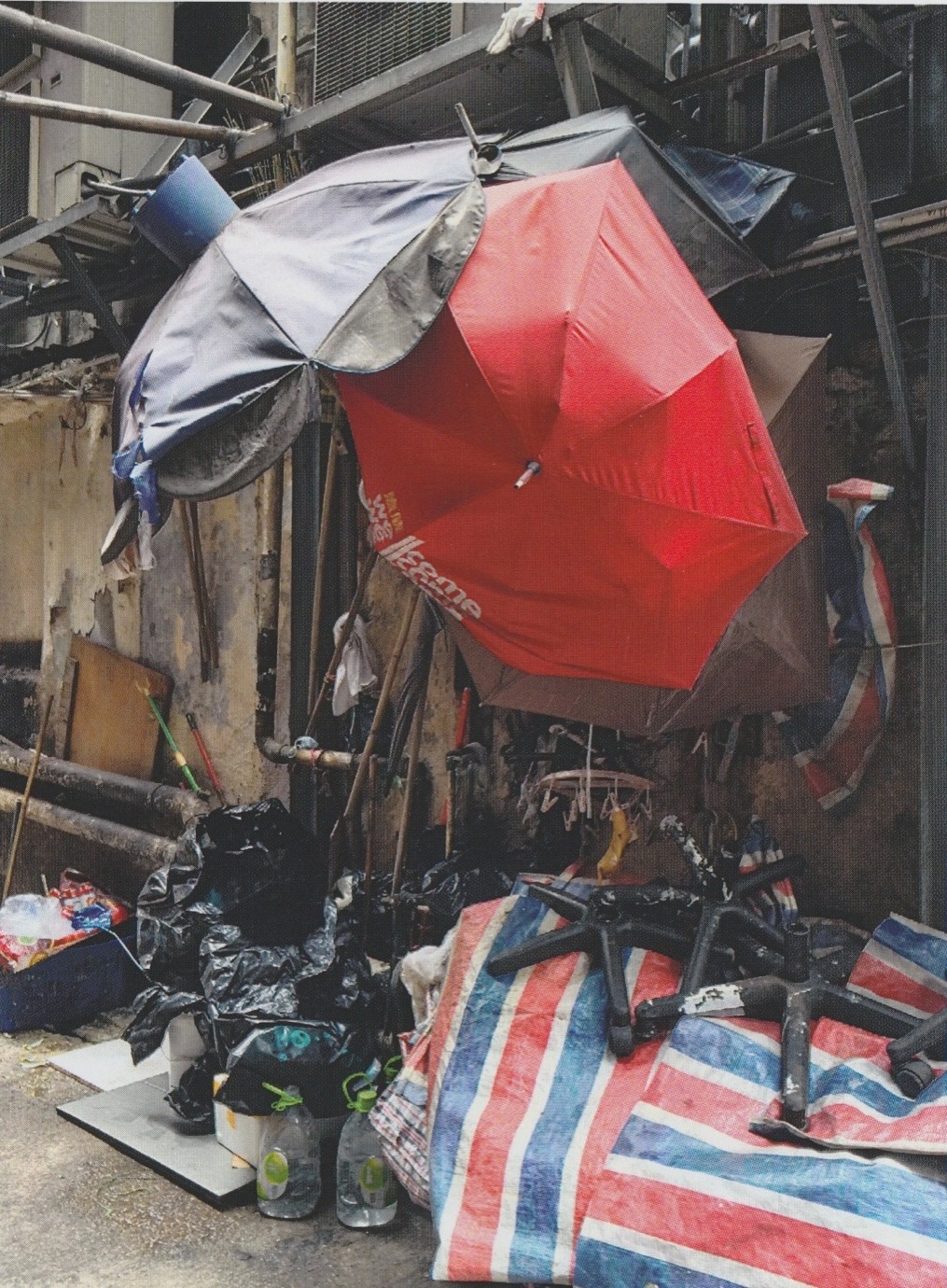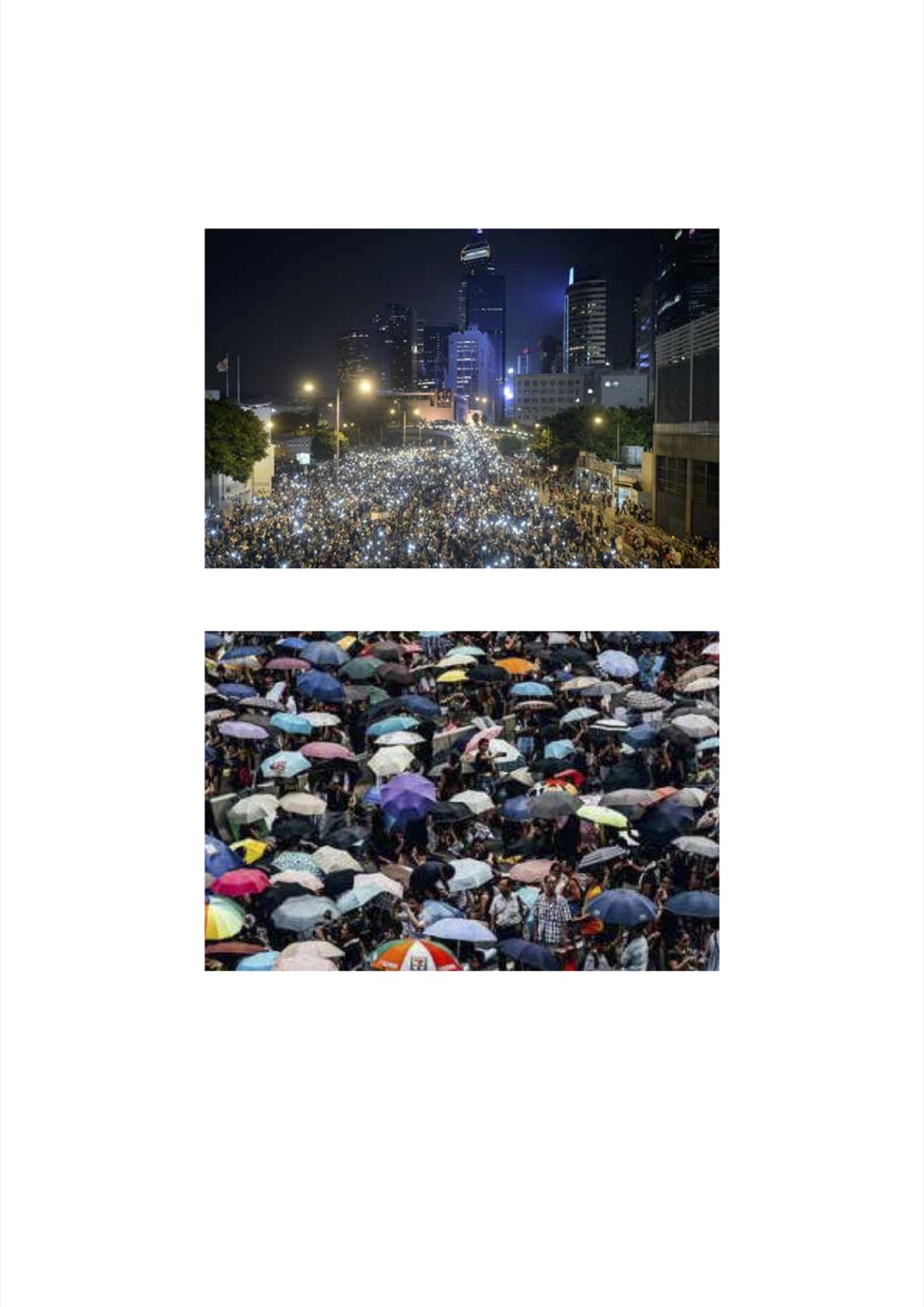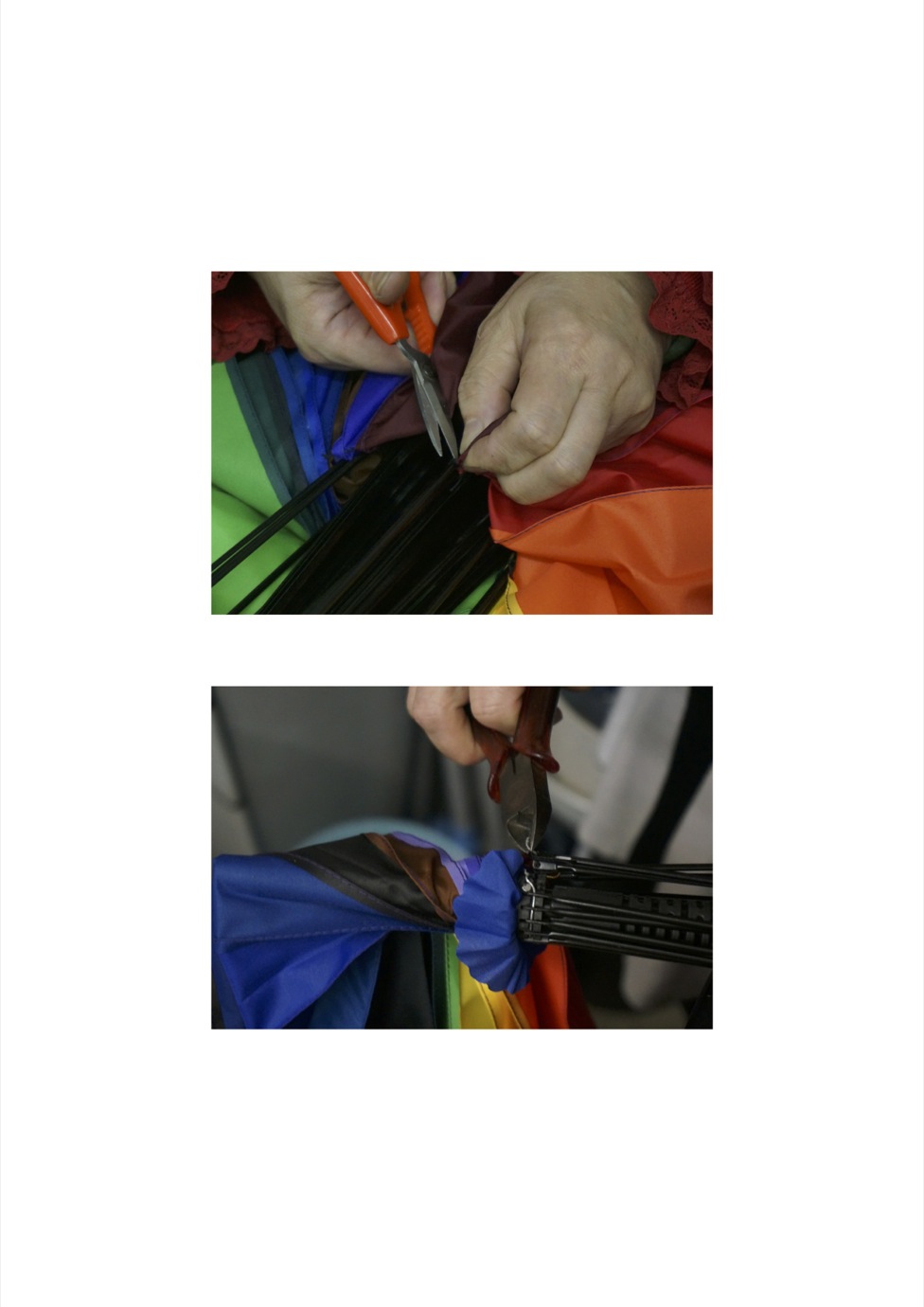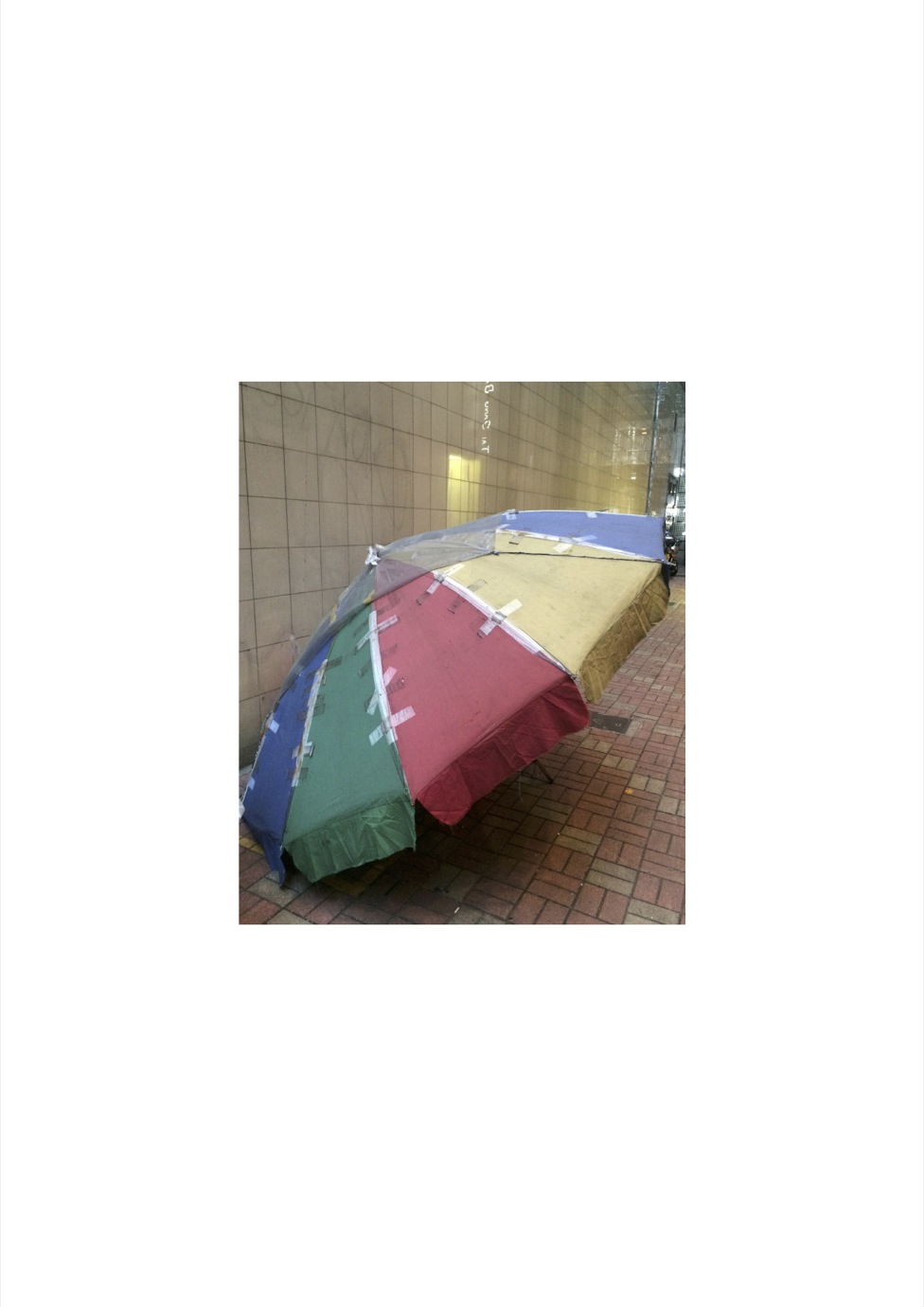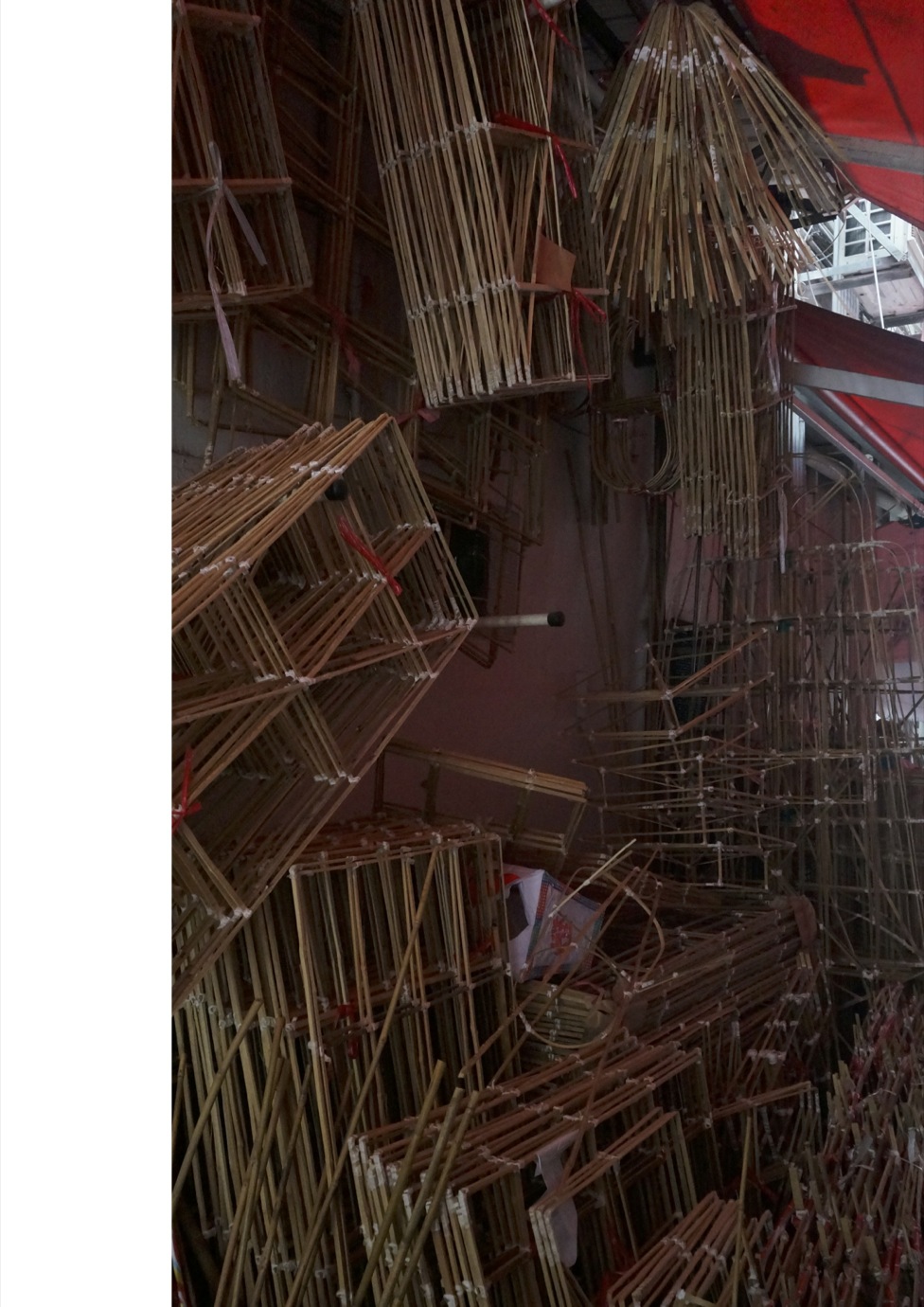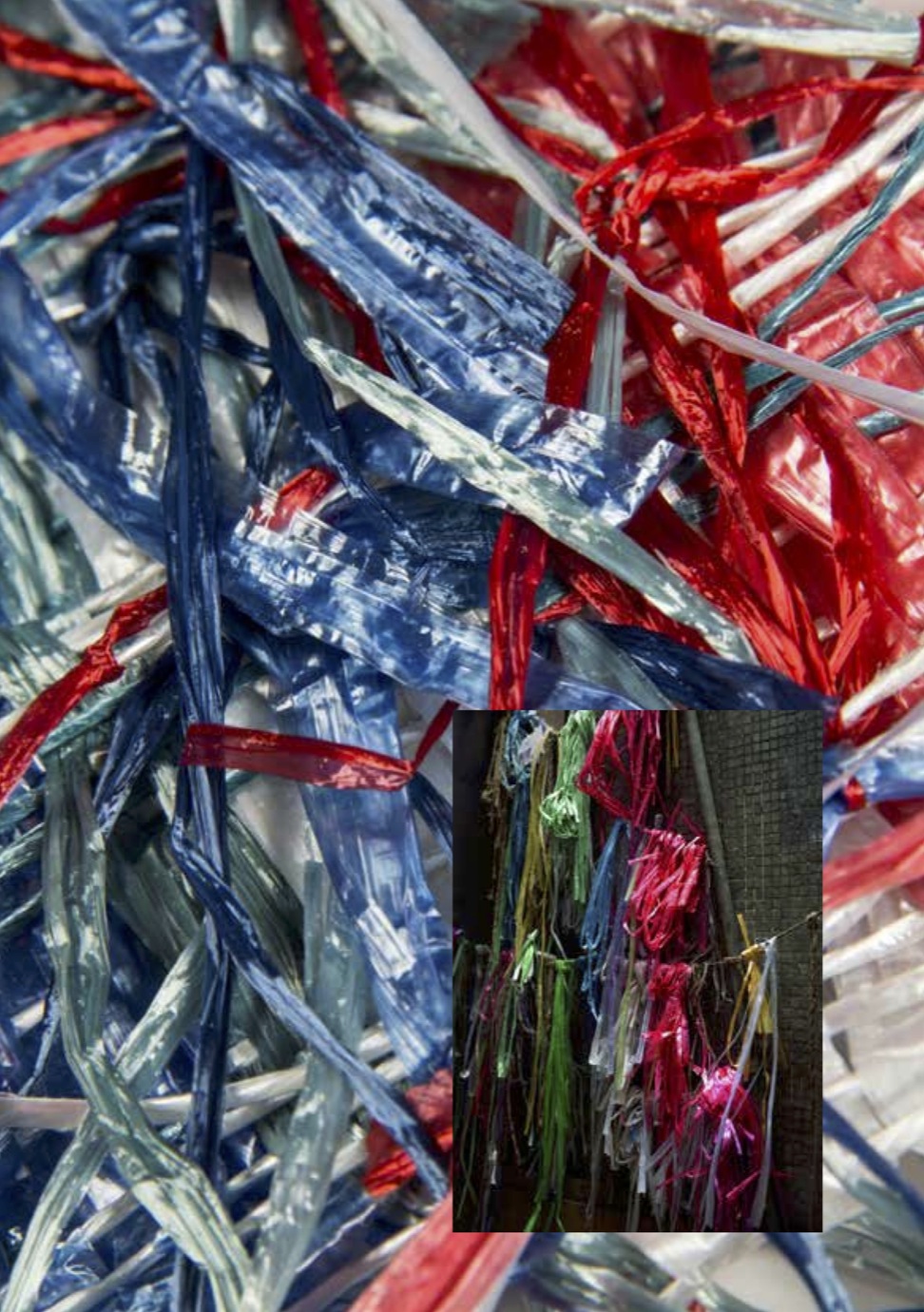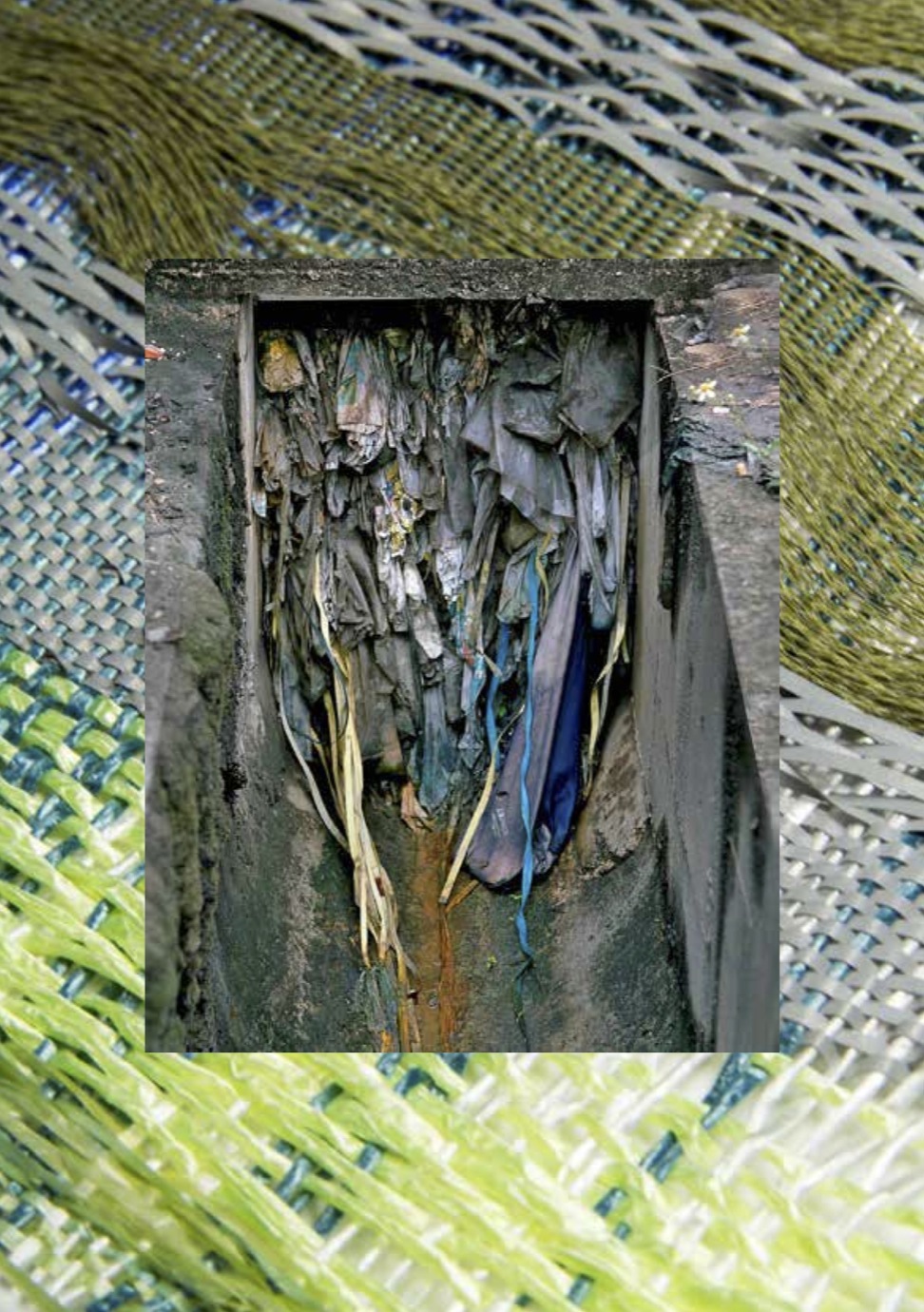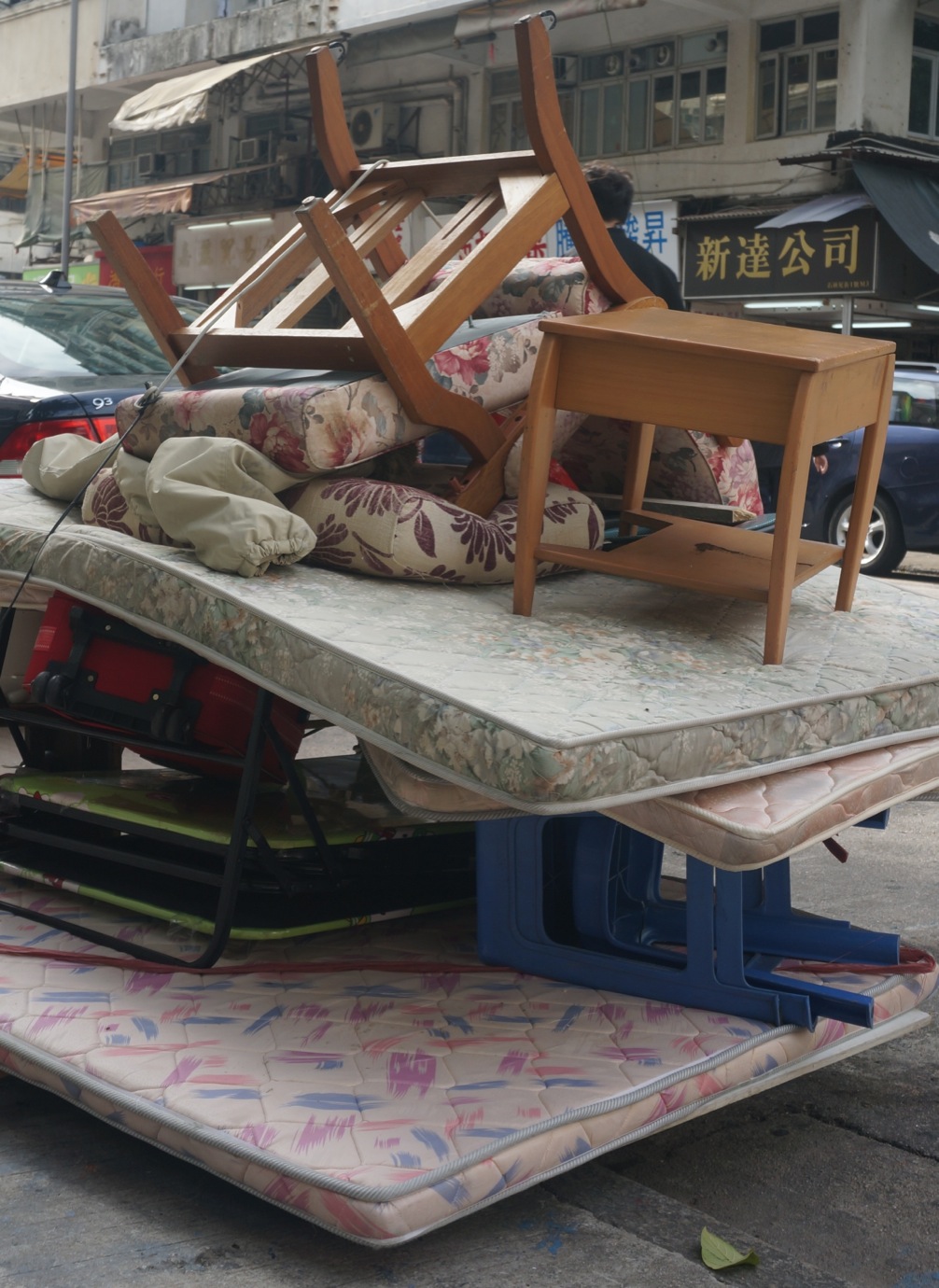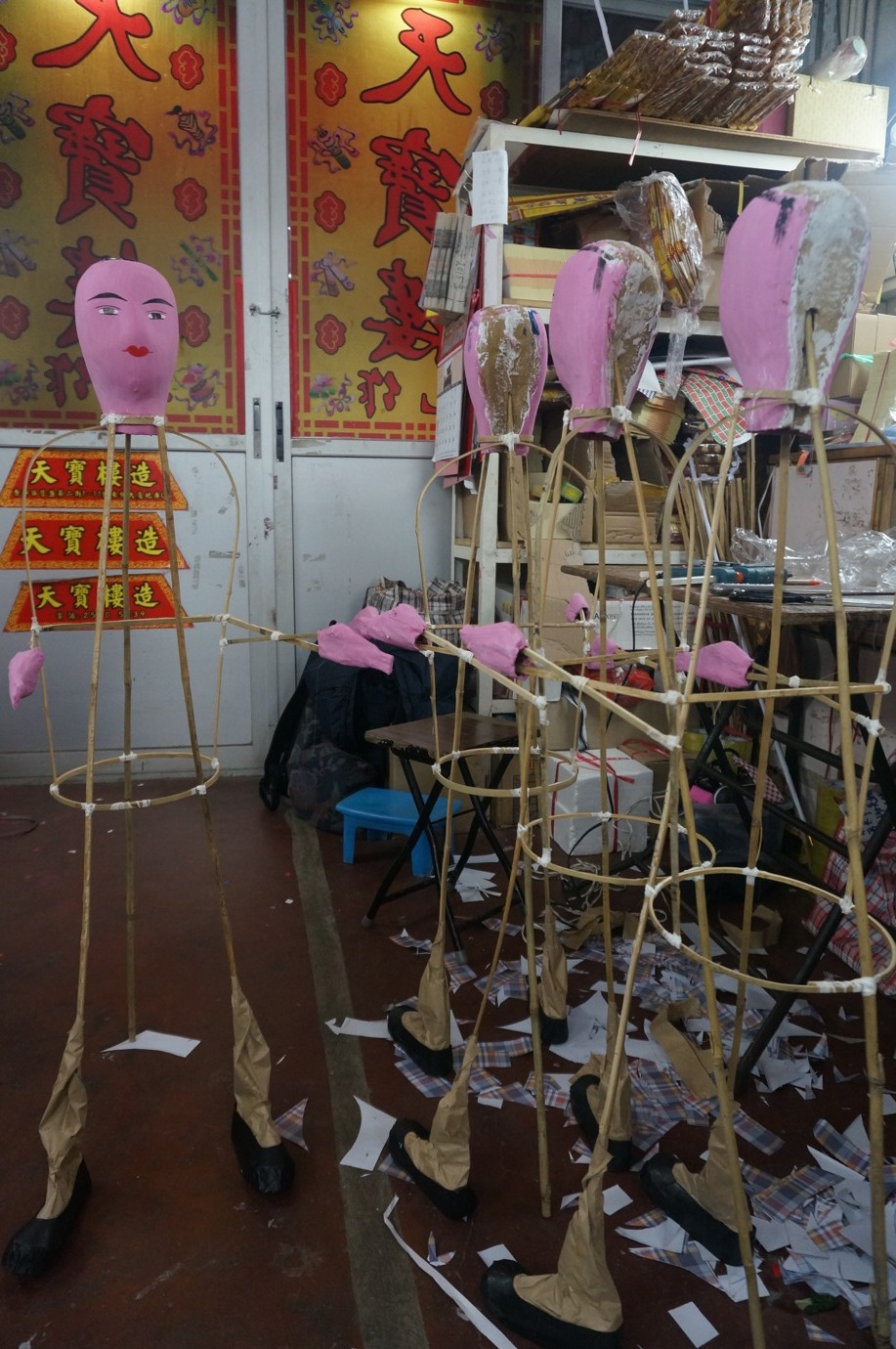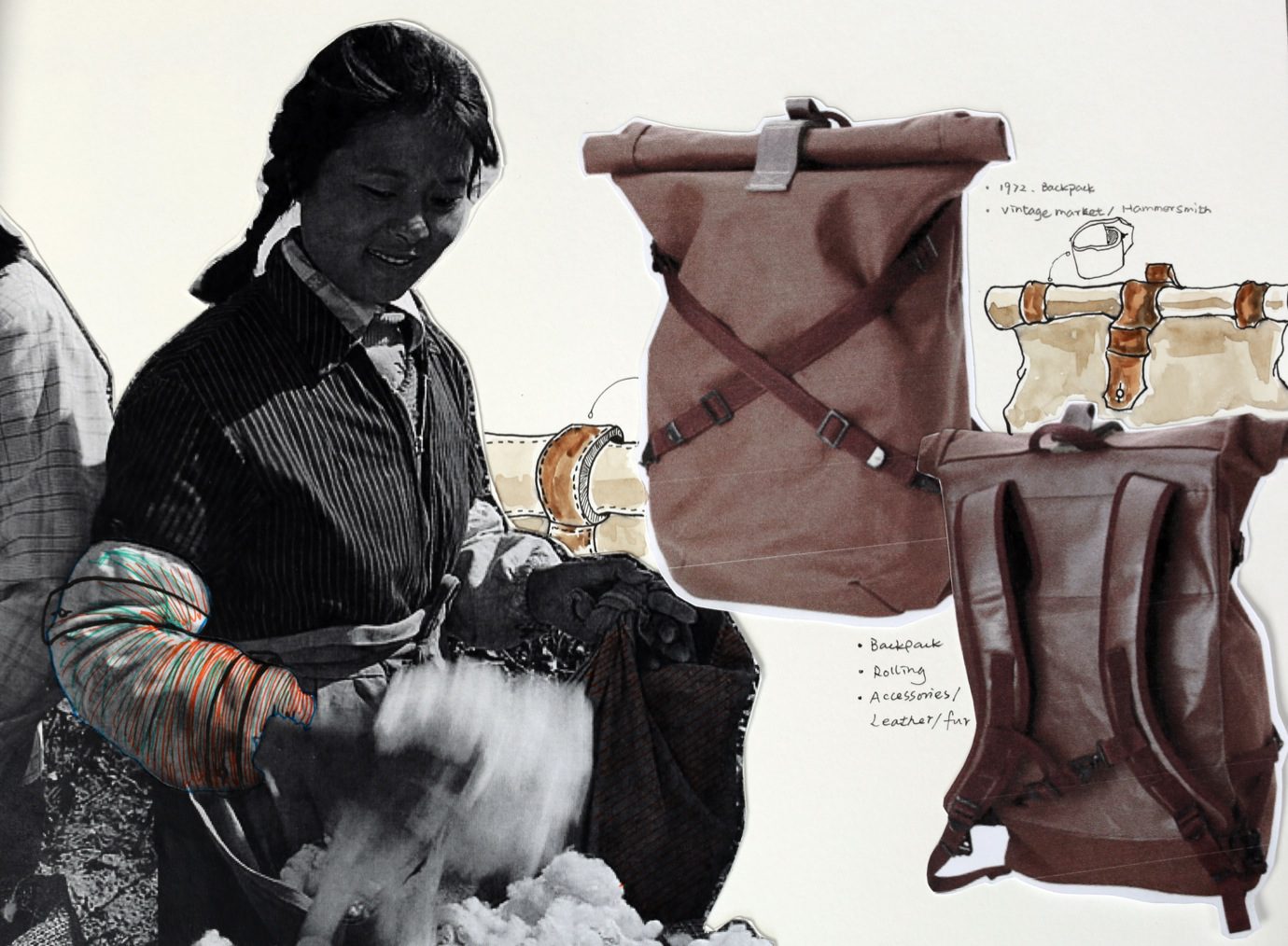What are the main references that you are basing your final collection on?
I have always wanted to make my final collection based on Hong Kong, since it’s the city that influenced me so much, and we (as in Hong Kong people) often say we live in a cultural desert — a place where everything has to be practical and about money. The umbrella revolution was a very unique thing in our culture, because protesting for our rights is not something that’s very common in our city, and it was really a defining movement for our generation. The fact that the meaning of the object umbrella completely changed after the event, was probably the beginning of my collection’s development. I was determined to collect all these images of objects in Hong Kong that reflect people’s lives. I saw a collection of photos by a German photographer Michael Wolf, who captured all these ‘informal arrangements’ of objects on the streets, in the alleys and different unexpected spots within the city. I was very inspired by his work and when I went back to Hong Kong during summer, I really looked at the city quite differently, and I took a lot of my own images of interesting objects, colours and textures that reflect Hong Kong.
As you’re in FDM, how does the marketing of your fashion design work come into play?
I think the marketing side of the project comes very naturally for me, as it’s really about my own cultural background with an underlying political message. It’s very straightforward in terms of the aesthetics, the message and presentation. I think the great thing about Fashion Design and Marketing is that it’s like a taster course for people who want to start their own brands. I have worked with a few new designers and they really have to handle everything, it’s really not just about the clothes! However, I think one thing that I keep on telling myself is: don’t be restricted by this ‘marketing’ thing when designing. I feel like BA is probably the only time you can interpret a theme to its fullest, without really worrying about how the clothes would sell.
What have you seen your classmates work on that you are enthusiastic about?
I love the fact that we are all doing things that are so different. I personally think it really helps when there isn’t a ‘womenswear’ or ‘menswear’ label on your course; it allows you to do whatever you want. I have seen someone using vacuum forming to create body parts; someone who is designing for a whole market of cool shorter girls; a collection with bouncing knit… We really get along and there’s a healthy level of competition, probably because we all have such different themes and directions that there are really no clashes at all.

